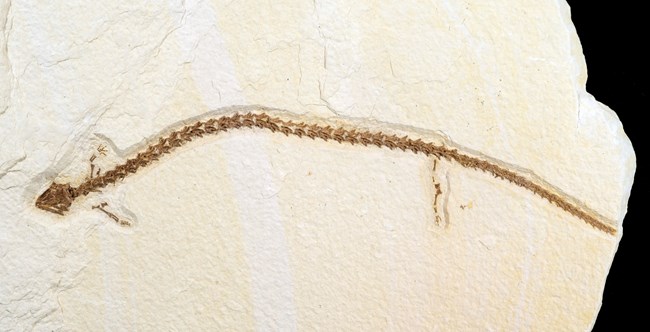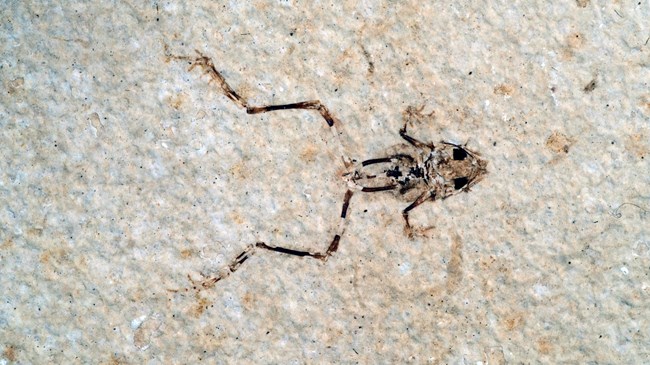|
Amphibians are extremely uncommon fossils in the Fossil Butte Member (FBM). Only 2 species have been identified. One possible explanation for this scarcity of amphibians is the alkalinity of Fossil Lake's water. The lake was supersaturated with calcium carbonate, making the pH around 8 or 8.5. Amphibians generally prefer a neutral pH of 7. It is possible amphibian specimens washed into Fossil Lake from a connecting stream with a neutral pH. See what amphibian fossils (52-million years old) are on display in our visitor center exhibits. 
NPS photo Aquatic Salamander - Paleoamphiuma tetradactylumOrder Urodela, Family SirenidaeThe 4 modern species of the Sirenidae family (commonly known as sirens) are found in warm climates of the southeastern United States and northern Mexico. Sirens are the only omnivorous salamanders, the rest being strict carnivores. Like its living relatives, P. tetradactylum had a toothless jaw and very small front limbs. However, modern sirens totally lack hind limbs, unlike P. tetradactylum. Only four salamanders have been found in the FBM. The specimen pictured is approximately 9.6 inches long. 
NPS Photo Frog - Aerugoamnis paulusOrder Anura, Family AnomocoelaAnura species are amphibians lacking tails, such as frogs. Only two specimens of this species have been found in the FBM. |
Last updated: September 26, 2025
